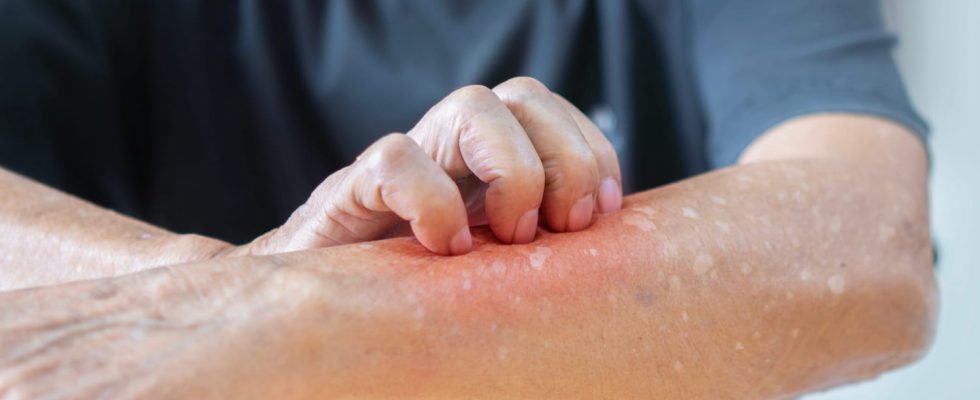After strange lesions appeared on the skin, a man died at the end of January 2024 from a mysterious virus called “Alaskapox”.
For the first time in the world, a man has died end of January 2024 of the virus Alaskapoxa mysterious virus responsible for skin lesions and symptoms typical of smallpoxreports the Alaska Department of Health. This “elderly” man resided in a wooded area on the Kenai Peninsula (Alaska) and reported caring for a stray cat near his residence who regularly hunted small mammals and who had scratched him several times. It was immunocompromised and treated for cancer. The virus Alaskapox (or “Alaskan Smallpox” in French) is a strain of orthopoxvirus, a family of viruses to which smallpox belongs, including monkeypox. This virus usually infects small mammals like voles and red-backed shrews. “Infections are rare ; [il faut] be aware of the symptoms but do not worry“, would like to reassure Dr. Julia Rogers, epidemiologist for the federal Centers for Disease Control and Prevention in Alaska.
Cases in France?
No, at the moment this virus has only been detected in the United States and cases remain exceptional. It is detected for the first time in a woman in Fairbanks, in Alaskain 2015. Between 2020 and 2023, six additional cases Alaskapox virus infections have been reported in Alaska. Except for the fatal case in January 2024, almost all patients presented with benign illnesses which resolved without treatment after a few weeks.
What are the symptoms ?
- The sudden appearance of one or more skin lesions taking the form of red bumps, pustules or papules, with uno induration (callus) in the center. The lesion has an “unusual” appearance and is reminiscent of “an insect or spider bite” which can itch.
- The swelling of lymph nodes (in the armpits, neck, groin, etc.), particularly those located close to the lesions.
- Pains joint and/or muscular
- Significant fatigue
Photos of Alaskapox lesions
Because there are so few cases, “we don’t know exactly how the virus spreads from animals to humans, but contact with small mammals and potentially domestic animals coming into contact with small wild mammals could play a role“, report scientists from the Alaska Department of Health. To date, no human-to-human transmission Alaskapox virus has not been documented.
What to do if you think you have Alaskapox lesions?
► Talk to a doctor who will take a photo of the lesion and send it to an epidemiology service.
► Keep the affected area covered witha bandage
► Do not touch the lesions or scratch them.
► Avoid sharing bedding or other linens who came into contact with the lesion.
► Avoid touching small mammals such as squirrels (hunters for example).
► Do not touch dead animals in your garden

